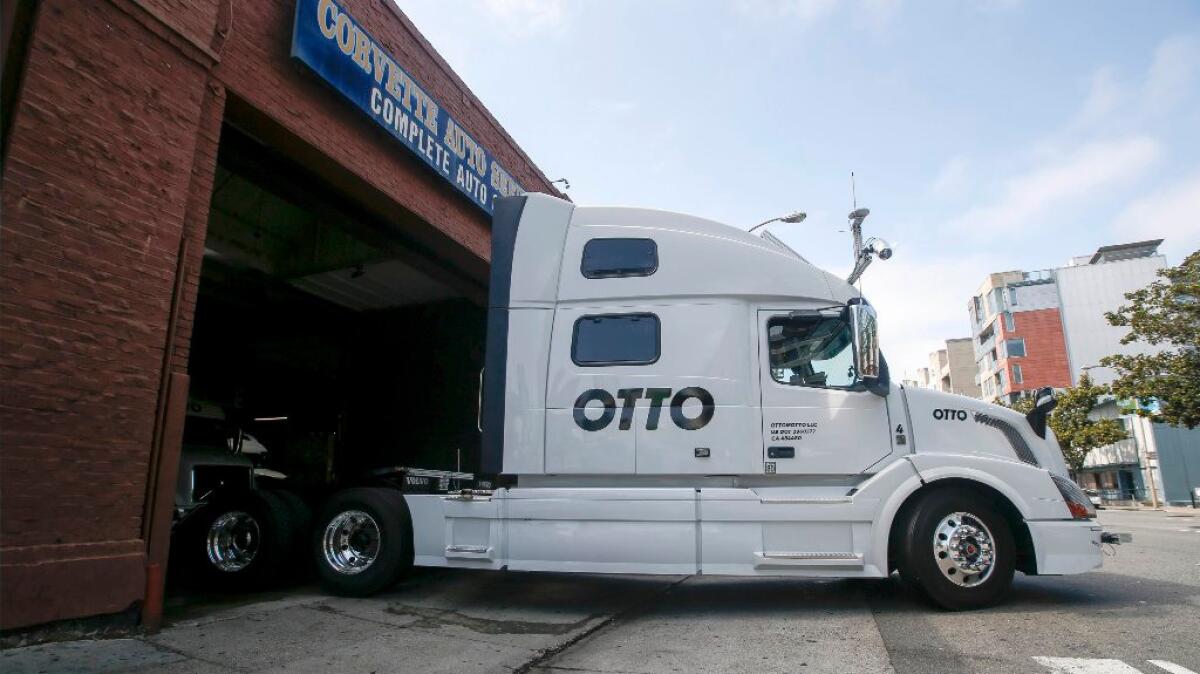Uber’s self-driving truck makes its first commercial delivery: beer

The first commercial shipment by a self-driving truck was a beer run.
Uber Technologies Inc.’s self-driving trucking unit, Otto, said Tuesday that it partnered with brewing giant Anheuser-Busch Cos. to carry 51,744 cans of Budweiser on a shipment through Colorado.
“Yes, you can go out right now and buy a can of beer that was shipped by a self-driving truck,” Otto said.
With “full support from the state of Colorado,” Otto said, the white-and-red truck traveled from Fort Collins down Interstate 25 to Colorado Springs last Thursday “exit-to-exit without any human intervention.”
“Our professional driver was out of the driver’s seat for the entire 120-mile journey down I-25, monitoring the self-driving system from the sleeper berth in the back,” Otto said.
Otto, started by former Google engineers and executives, was acquired in August by San Francisco-based Uber, which sees self-driving vehicles as the future not only for ride-sharing and deliveries but also for larger shipments by truck.
The company frames the idea this way: The trucks could stay on the road for longer periods while their drivers rest. But there are concerns that trucks without human hands at the wheel eventually could mean fewer jobs for the 1.7 million truckers currently working in the United States.
Trucking is a good candidate to be the first type of driving to be fully automated. One reason is that long-haul big rigs spend most of their time on highways, which are the easiest roads to navigate without human intervention.
But there’s also a sweeter financial incentive for automating trucks: Trucking is a $700-billion industry, in which a third of costs go to compensating drivers. Eliminating drivers would mean big savings.
Otto uses a system of cameras, radar and laser-based lidar sensors that control the truck’s acceleration, braking and steering.
Seeing a big-rig truck without anyone in the front seat can be a bit jarring. But Otto contended that when motorists “see a truck driving down the road with nobody in the front seat, you’ll know that it’s highly unlikely to get into a collision, drive aggressively or waste a single drop of fuel.”
Times staff writer Natalie Kitroeff contributed to this report.
For more business news, follow James F. Peltz on Twitter: @PeltzLATimes
ALSO
If AT&T swallows Time Warner, who might be gobbled up next?
Need Halloween decorations or camping gear? L.A. startup Joymode wants to be the Uber of that
The largest auto-scandal settlement in U.S history was just approved. VW buybacks begin next week
More to Read
Inside the business of entertainment
The Wide Shot brings you news, analysis and insights on everything from streaming wars to production — and what it all means for the future.
You may occasionally receive promotional content from the Los Angeles Times.











